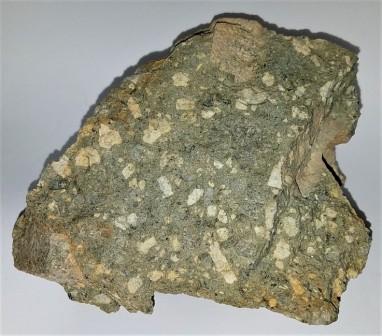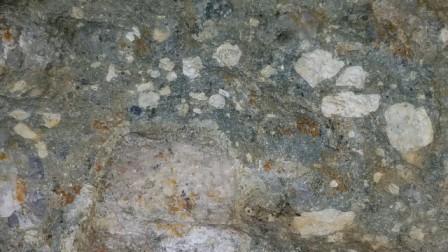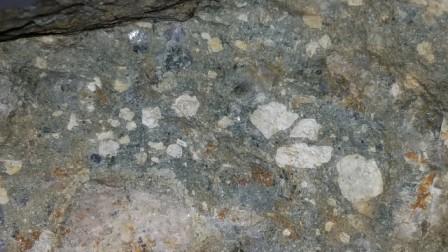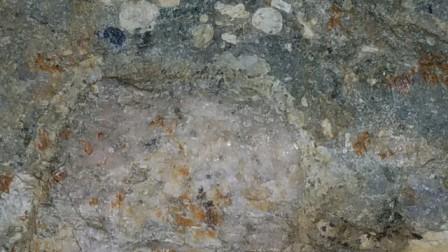Greisen
Photographed by Michael P. Klimetz
[Altered Porphyritic Granite with Kaolinized Feldspar Phenocrysts and Disseminated Groundmass Tin and Tungsten Minerals]
Cligga Head
Cornwall
UNITED KINGDOM
Photographed by Michael P. Klimetz
[Altered Porphyritic Granite with Kaolinized Feldspar Phenocrysts and Disseminated Groundmass Tin and Tungsten Minerals]
Cligga Head
Cornwall
UNITED KINGDOM
Photographed by Michael P. Klimetz
[Altered Porphyritic Granite with Kaolinized Feldspar Phenocrysts and Disseminated Groundmass Tin and Tungsten Minerals]
Cligga Head
Cornwall
UNITED KINGDOM
Photographed by Michael P. Klimetz
[Altered Porphyritic Granite with Kaolinized Feldspar Phenocrysts and Disseminated Groundmass Tin and Tungsten Minerals]
Cligga Head
Cornwall
UNITED KINGDOM
Photographed by Michael P. Klimetz
[Altered Porphyritic Granite with Kaolinized Feldspar Phenocrysts and Disseminated Groundmass Tin and Tungsten Minerals]
Cligga Head
Cornwall
UNITED KINGDOM
Photographed by Michael P. Klimetz
[Altered Porphyritic Granite with Kaolinized Feldspar Phenocrysts and Disseminated Groundmass Tin and Tungsten Minerals]
Cligga Head
Cornwall
UNITED KINGDOM
Photographed by Michael P. Klimetz
[Altered Porphyritic Granite with Kaolinized Feldspar Phenocrysts and Disseminated Groundmass Tin and Tungsten Minerals]
Cligga Head
Cornwall
UNITED KINGDOM
Greisen is a highly altered granitic rock or pegmatite. Greisen is formed by self-generated alteration of a granite and is a class of moderate- to high-temperature magmatic alteration related to release of volatiles dissolved in a magma during the solidification of that magma. Greisens appear as highly altered rocks, partly coarse, crystalline granite, partly vuggy with miarolitic cavities, disseminated halide minerals such as fluorite, and occasionally metallic oxide and sulfide ore minerals, borate minerals (tourmaline) and accessory phases such as sphene, beryl or topaz. Greisens are formed by endogenous alteration of granite during the cooling stages of emplacement. Greisen fluids are formed by granites as the last highly gas- and water-rich phases of complete crystallization of granite melts. This fluid is forced into the interstitial spaces of the granite and pools at the upper margins, where boiling and alteration occur. Greisens appear to be restricted to intrusions which are emplaced high in the crust, generally at a depth between 0.5 and 5 km, with upper aureoles which are sealed shut to prevent fluids escaping. This is generally required, as the boiling to produce greisenation cannot occur at depths greater than 5 kilometers. They are also generally associated only with potassic igneous rocks; S-type granite, not I-type granodiorite or diorite. Greisens are prospective for mineralization because the last fluids of granite crystallization tend to concentrate incompatible elements such as tin, tungsten, molybdenum and fluorine, as well as metals such as gold, silver, and occasionally copper. Tectonically, greisen granites are generally associated with generation of S-type suites of granites in thick arc and back-arc fold belts where subducted sedimentary and felsic rock is melted.






